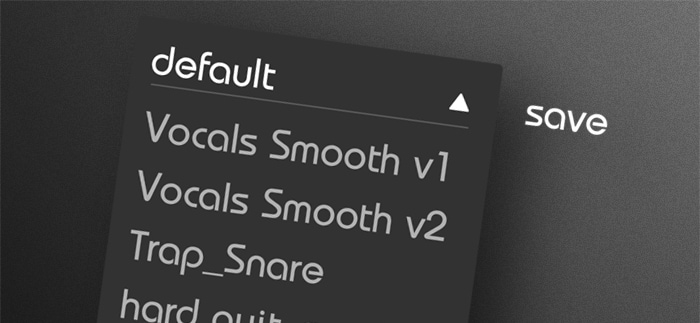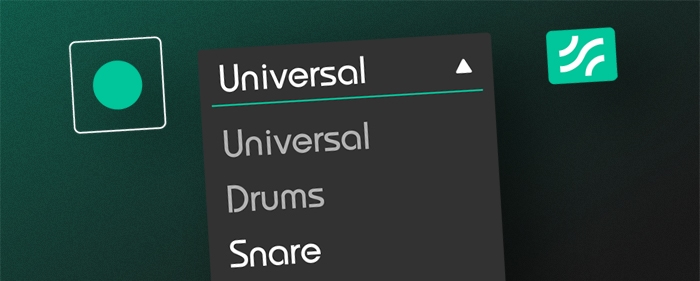Most of our audio plug-ins come with profiles and the option to save presets. Profiles, presets … since these terms are easily confused, we will explain their differences in our plug-ins and show you the benefits of both.
Presets have been around for quite some time now. Profiles, on the other hand, have enriched our studio workflow only since intelligent processing has become available in audio plug-ins.

Presets are a defined set of parameters. They help you by quickly making specific changes to your audio material. These changes are always the same, regardless of the input signal (e.g. an EQ preset will add 3dB at 3kHz no matter if the frequencies at 3kHz in your track are already heavily accentuated or not). Although such changes are based on fixed parameters, the results might be very different from what you would expect due to the characteristics of the track. The great thing about presets is that you can establish a very consistent sound fast e.g. on a production of multiple songs. But only if the recorded tracks have the same characteristics, such as the same guitar being played by the same person on each song.

Profiles are determined by a defined objective that is reached in relation to a given audio track – the changes are not fixed but dependent rather on the input signal. Creating profiles is much more complex than presets, since the former are packed with various types of audio data knowledge, such as energy progressions, statistics and meta information, in order to achieve the determined objective. Specifically, in the case of our intelligent plug-ins, these are spectral patterns, masking characteristics etc.

We decided a long time ago to focus the algorithmic objectives of our plug-ins on corrective tasks, in the technical sense, in order to provide tools that do a lot of the basic grunt work in a highly efficient and time-saving manner without interfering with your creative goals.
Since profiles achieve their objective by considering your input material, consistency can be achieved quickly across a number of tracks even if they have different characteristics.